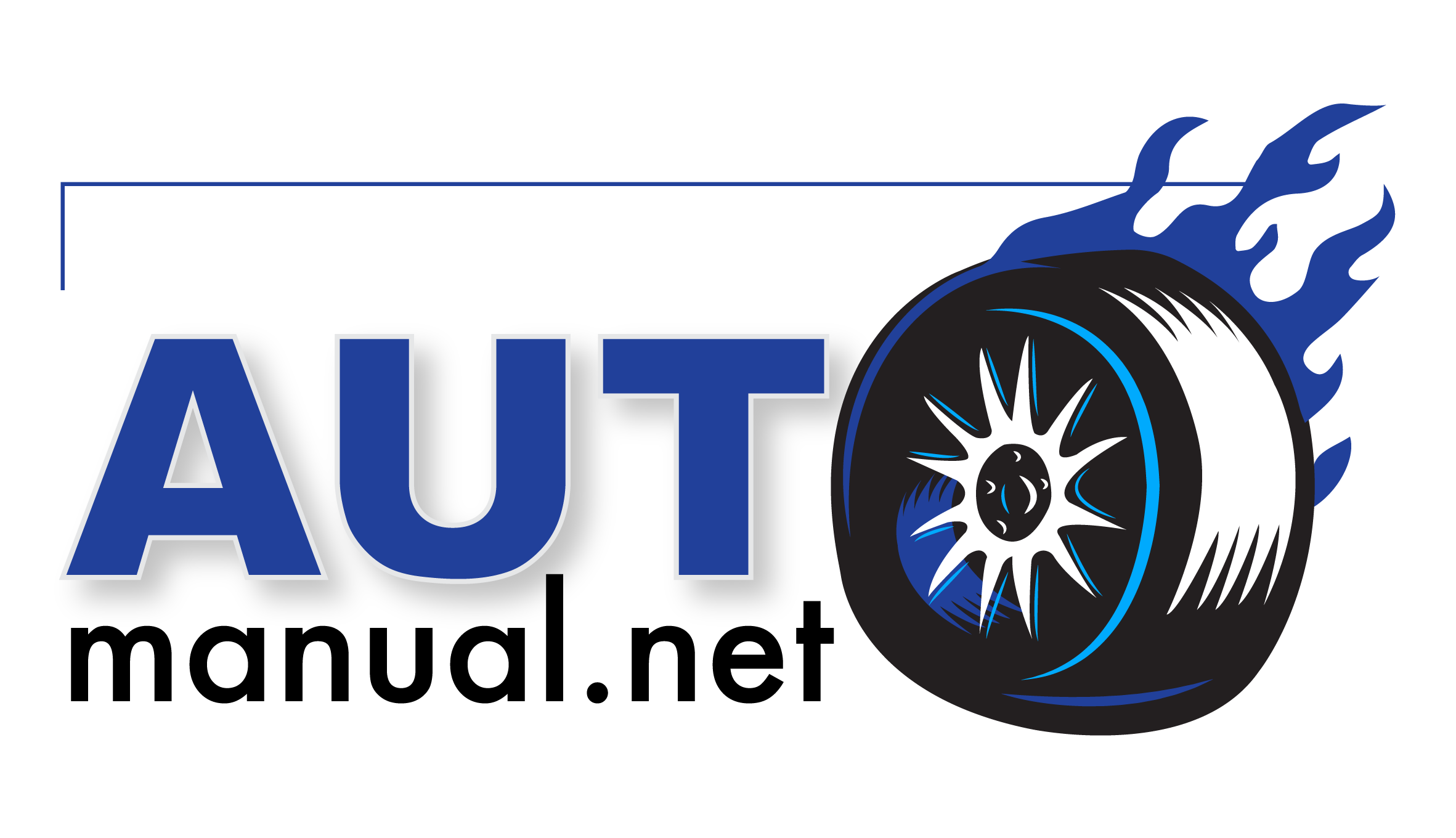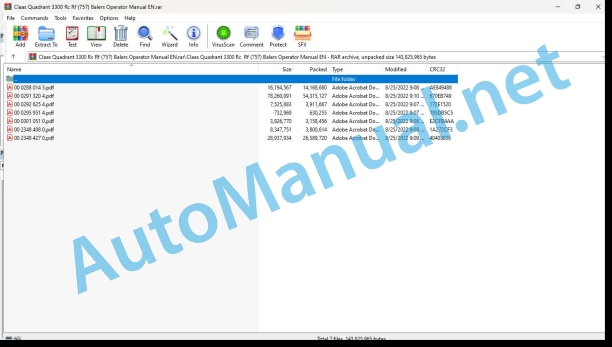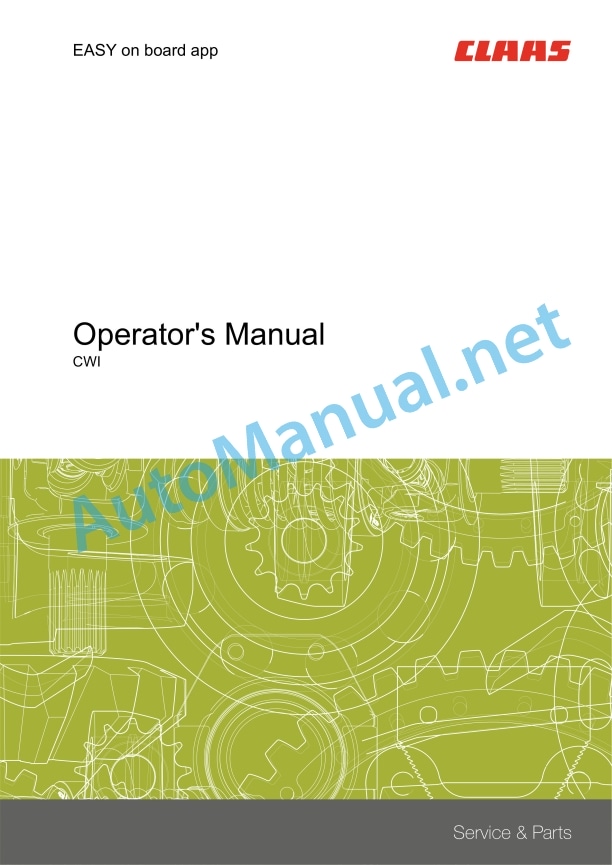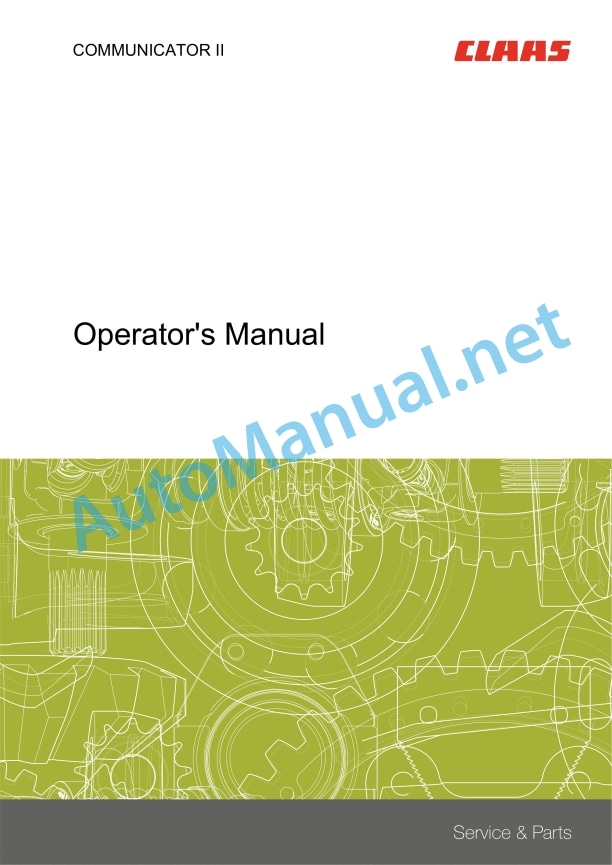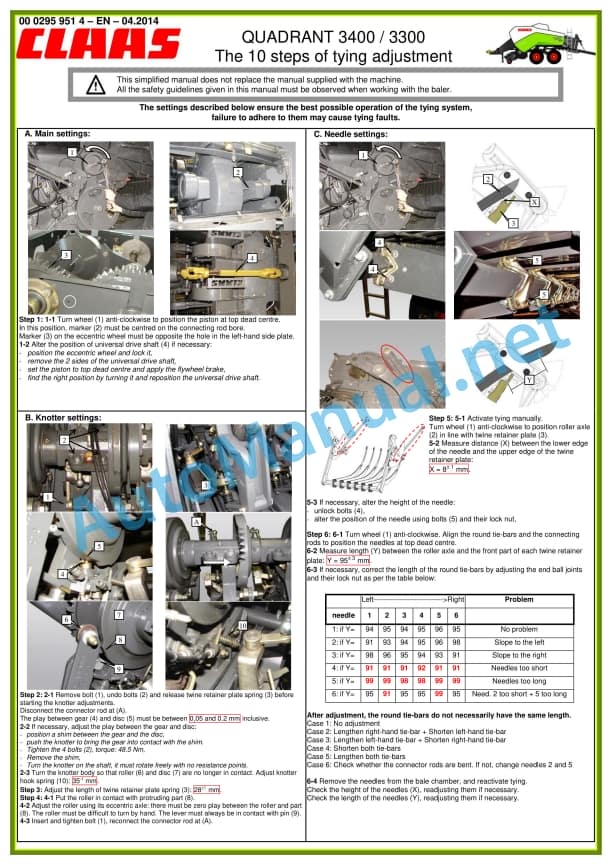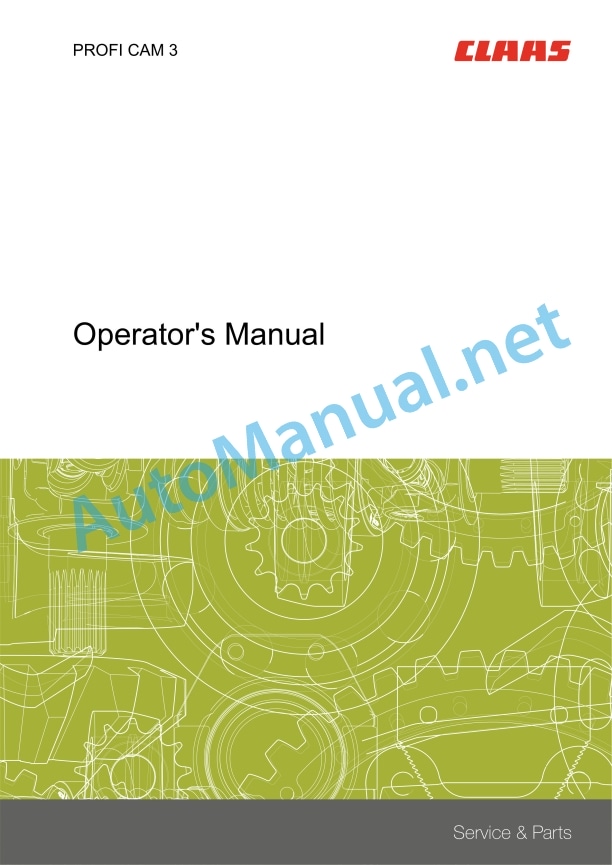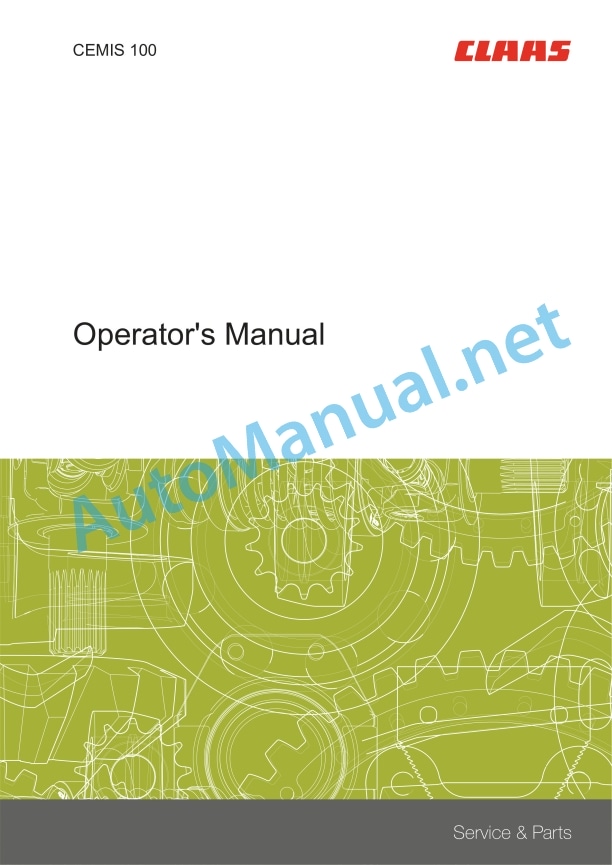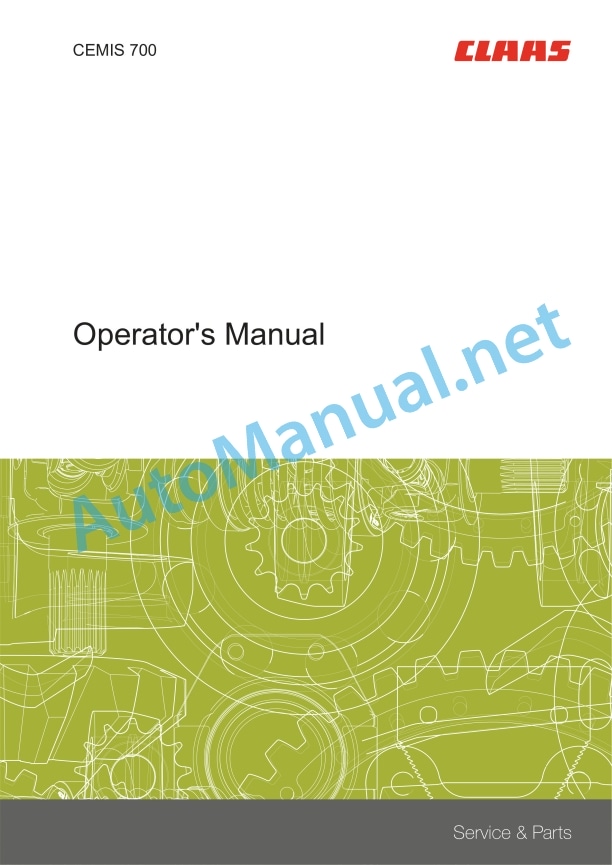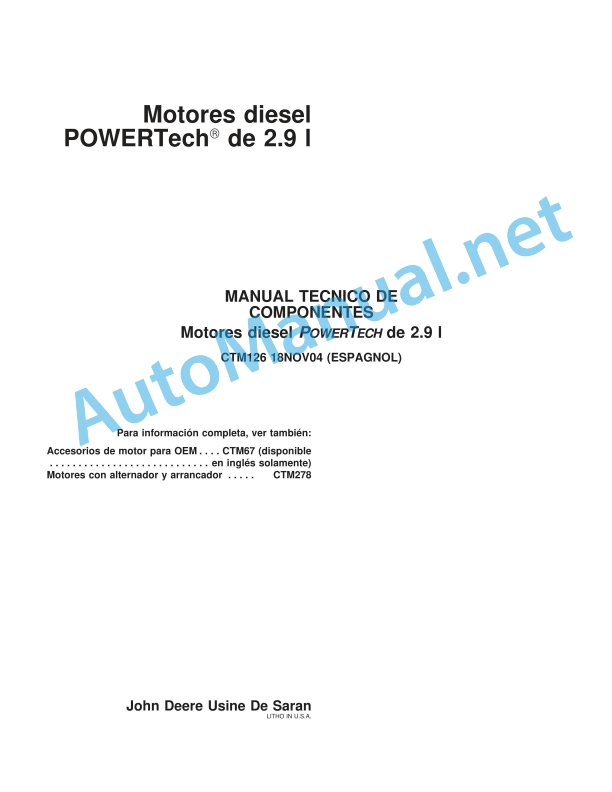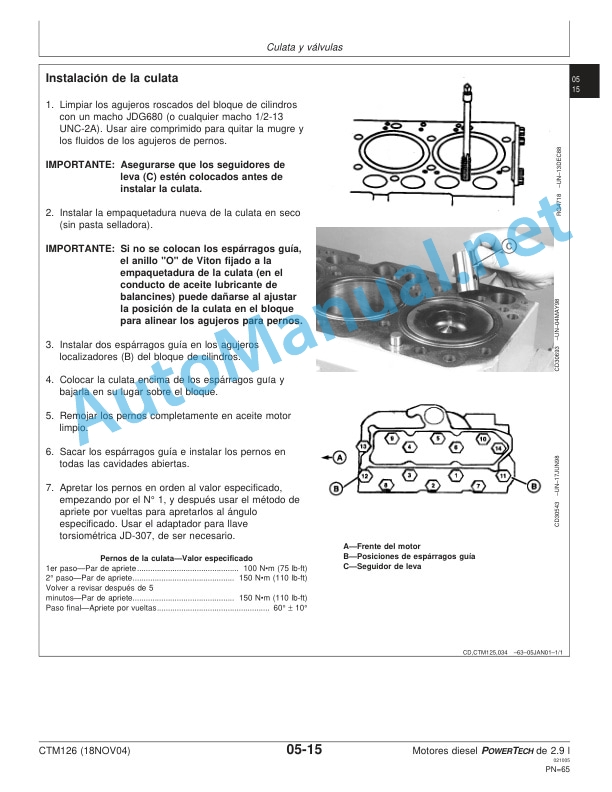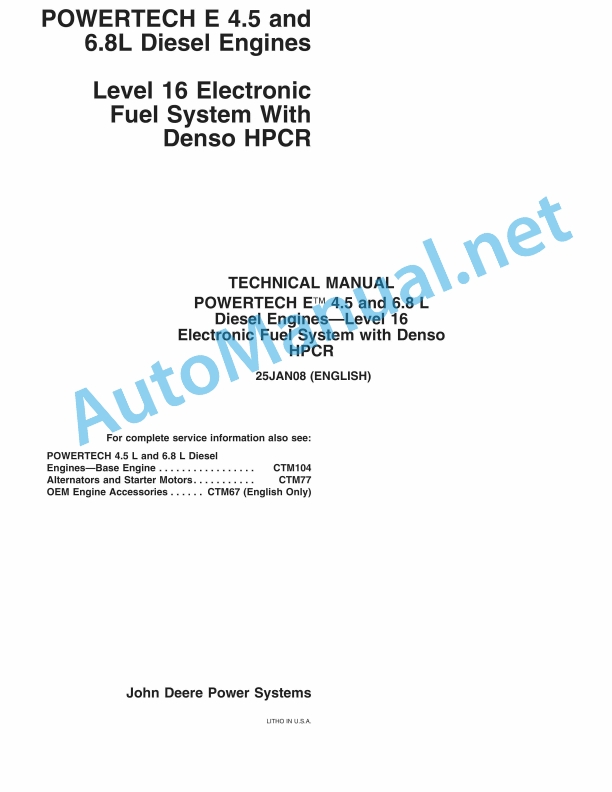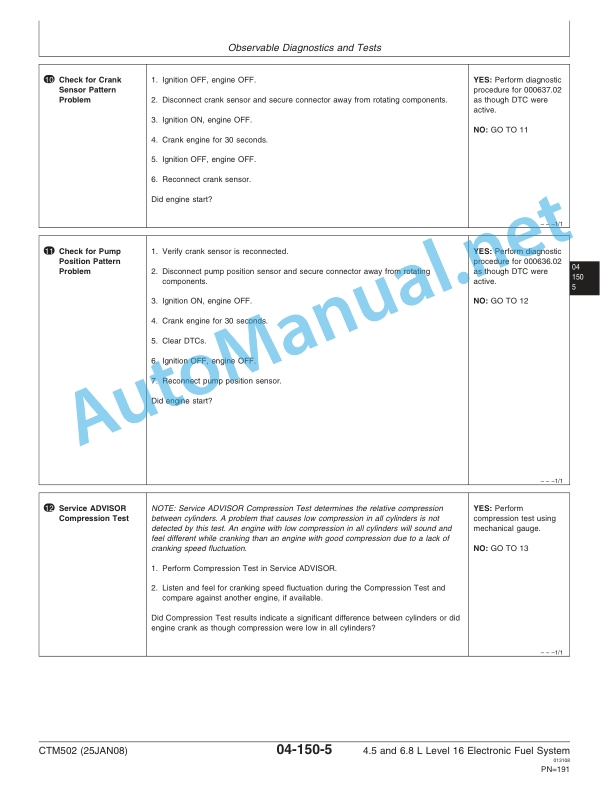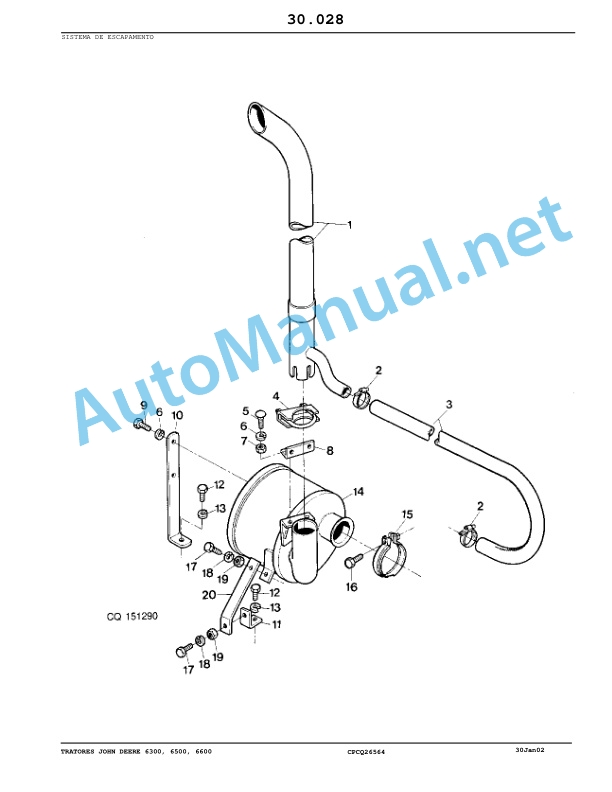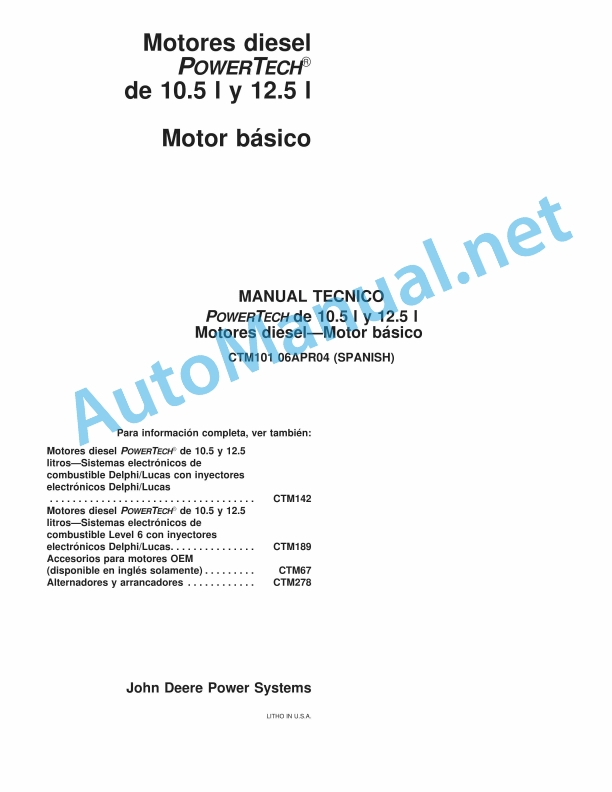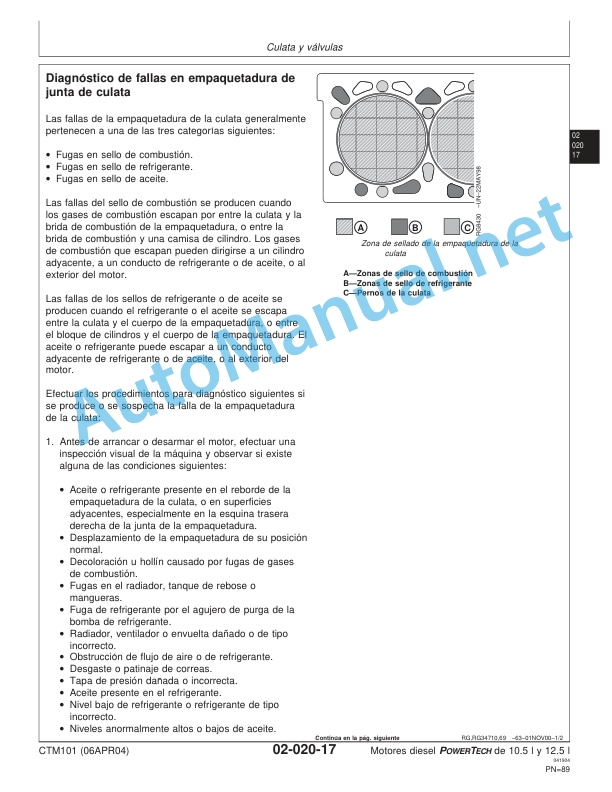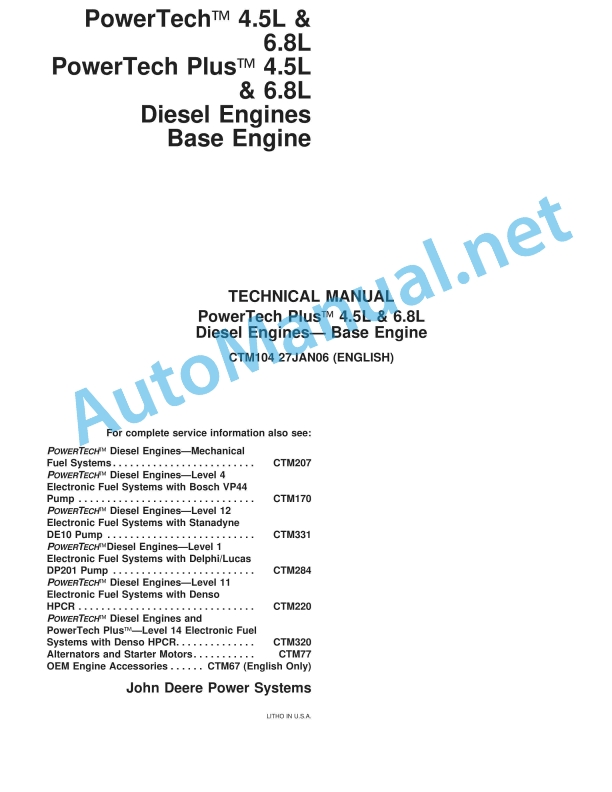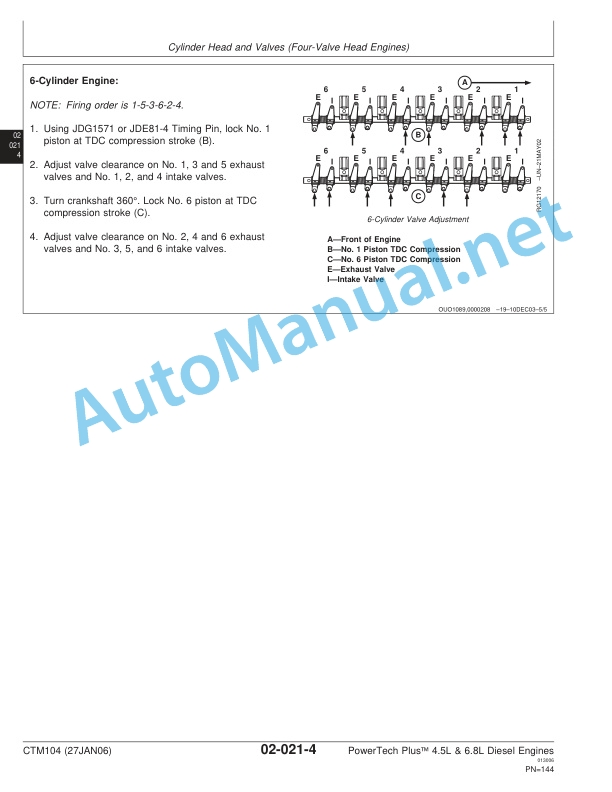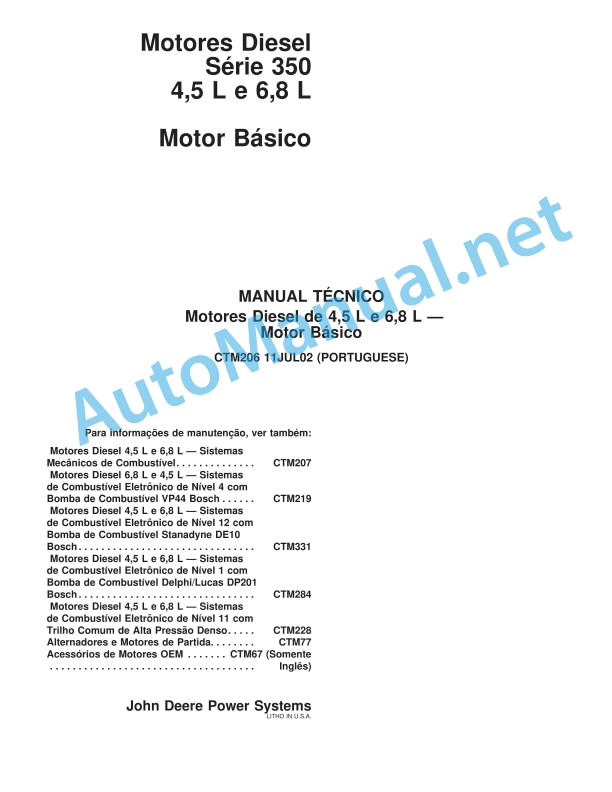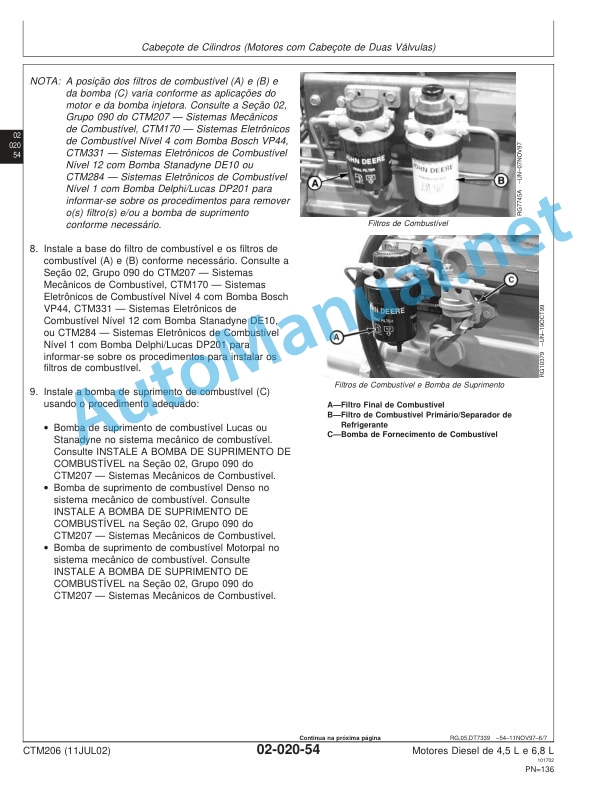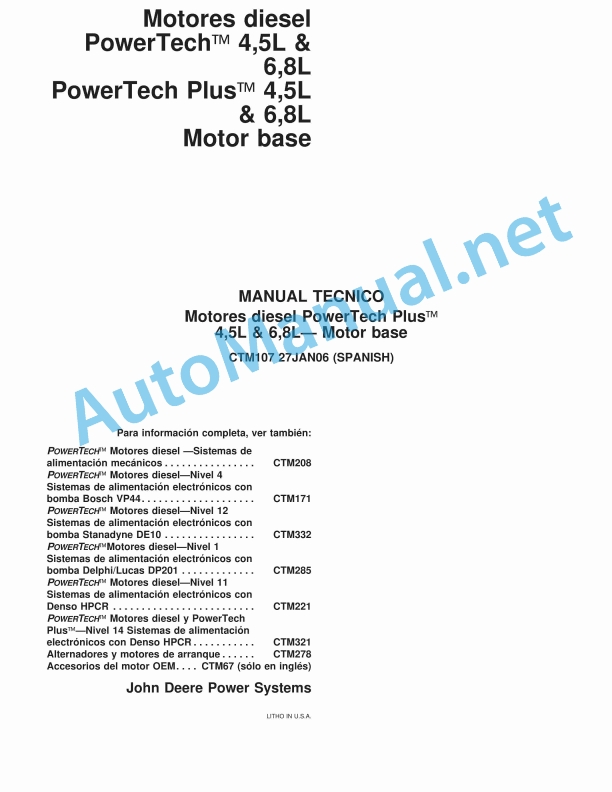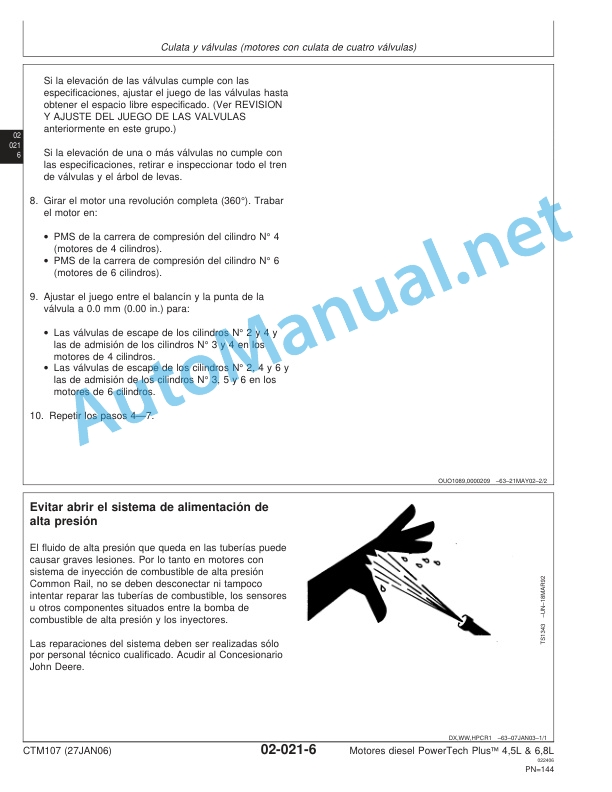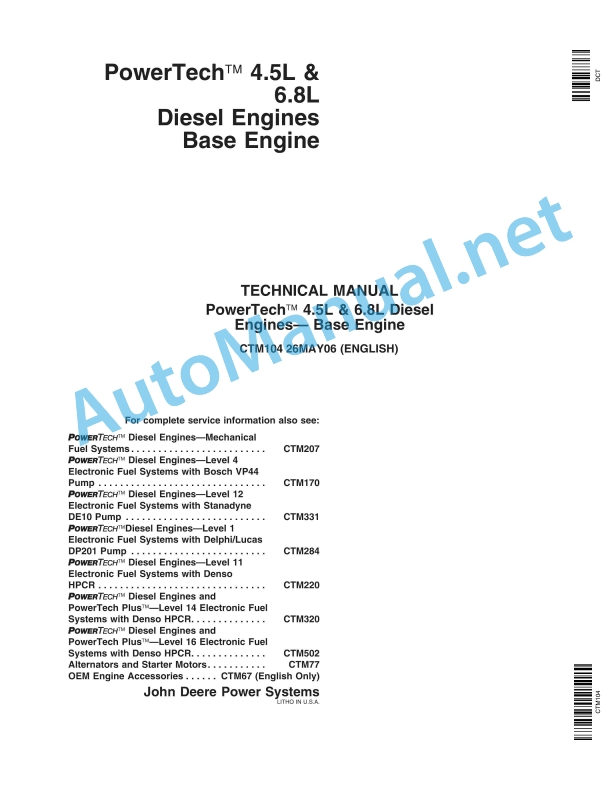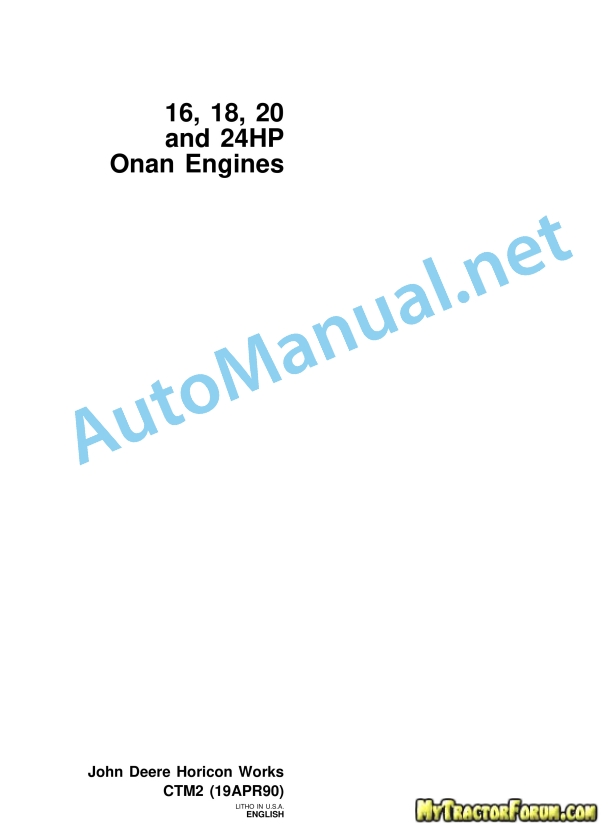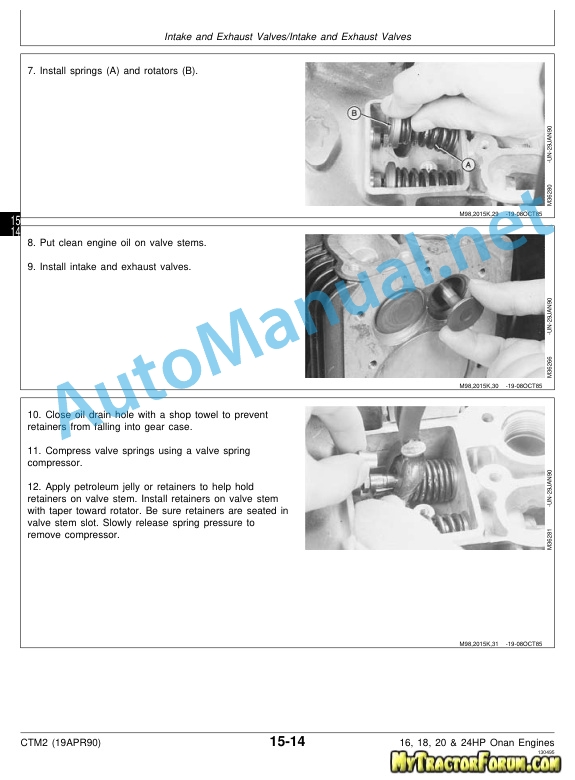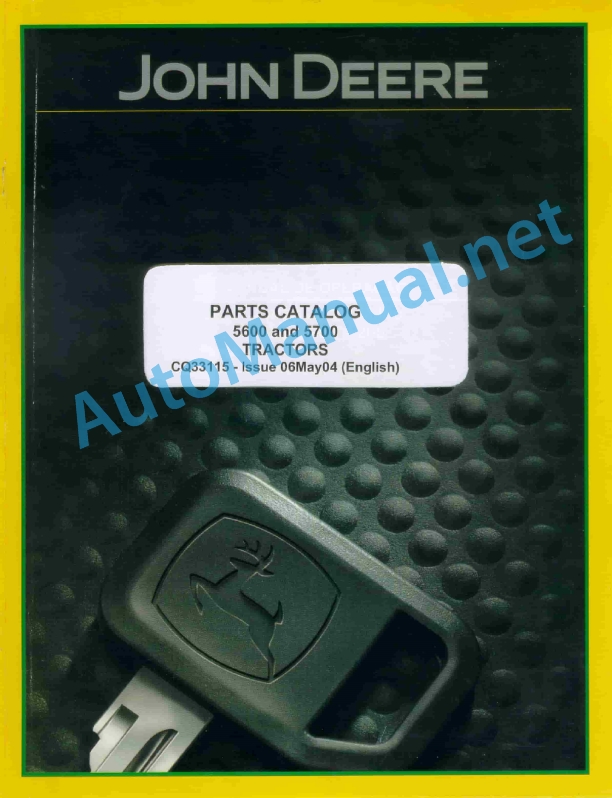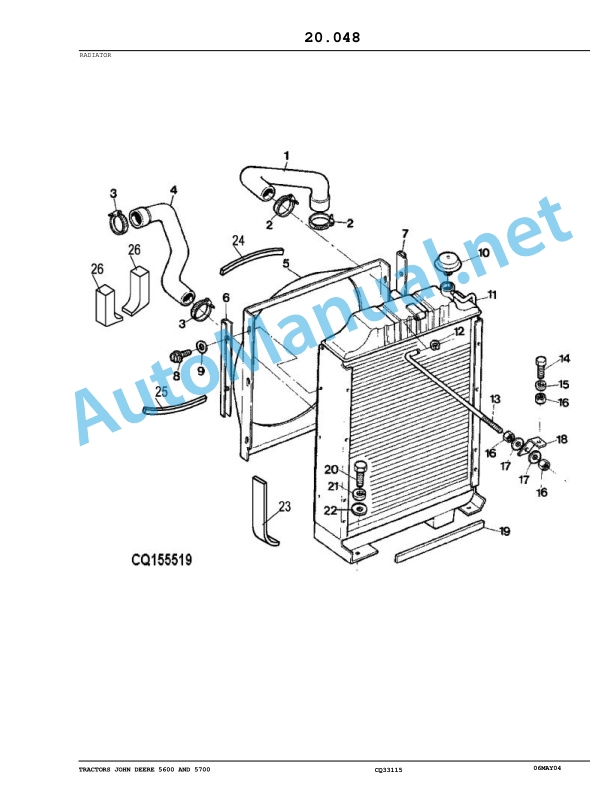Claas Quadrant 3300 Rc Rf (757) Balers Operator Manual EN
$50.00
- Model: Quadrant 3300 Rc Rf (757) Balers
- Type Of Manual: Operator Manual
- Language: EN
- Format: PDF(s)
- Size: 102 MB
File List:
00 0288 014 3.pdf
00 0291 320 4.pdf
00 0292 625 4.pdf
00 0295 951 4.pdf
00 0301 051 0.pdf
00 2348 408 0.pdf
00 2348 427 0.pdf
00 0288 014 3.pdf:
EASY on board app
Table of contents
1 Introduction
1.1 General information
1.1.1 Validity of the manual
1.1.2 Information about this Operator’s Manual
1.1.3 Symbols and notes
1.1.4 Qualified specialist workshop
1.1.5 Maintenance notes
1.1.6 Notes on warranty
1.1.7 Spare parts and technical questions
1.1.8 Technical requirements
1.2 Intended use
1.2.1 Intended use
1.2.2 Reasonably foreseeable misuse
2.1 Identifying warnings
2.1.1 Hazard signs
2.1.2 Signal word
2.2 Safety rules
2.2.1 Meaning of Operator’s Manual
2.2.2 Requirements made on all persons working with the product
2.2.3 Hazard areas
2.2.4 Check interactions with self-propelled machines / tractors and implements
2.2.5 Structural changes
2.2.6 Optional equipment and spare parts
2.2.7 Technical status
2.2.8 Hazard caused by damage to the product
2.2.9 Visibility of work area
2.2.10 Glare and reflections
2.2.11 Unintentional triggering of functions
2.2.12 Hazards caused by signal tones
2.2.13 Unauthorised use
2.2.14 Use of mobile terminal outside the cab
2.2.15 Follow the safety instructions
2.2.16 Respecting technical limit values
2.2.17 Preparing the product for road travel
2.2.18 Hazards when driving on the road and on the field
2.2.19 Hazards when driving on the road with an ISOBUS implement
2.2.20 Switching off the mobile terminal while driving
2.2.21 Hazards from disturbance of WLAN environment
2.2.22 Hazards from covering up the App
2.2.23 Hazards caused by malfunctions of the app
2.2.24 Raised machine parts and loads
3 Product description
3.1 Overview and method of operation
3.1.1 Overview of CWI
3.1.2 Functions of CWI
3.2 Identification plates and identification numbers
3.2.1 CWI identification plate
3.3 Information on the product
3.3.1 Factory settings
3.3.2 Software and hardware version
3.3.3 Seal on the CWI
4 Operating and display elements
4.1 CLAAS Wireless Interface (CWI)
4.1.1 CWI operating elements
4.2 CWI Setup App
4.2.1 Overview of screen
4.2.2 Buttons
4.2.3
4.2.4
4.2.5
5 Technical specifications
5.1 CLAAS Wireless Interface (CWI)
5.1.1 Specification
6 Preparing the product
6.1 Installing the product
6.1.1 Installing the CWI Setup app
6.1.2 Installing the EASY on board app
6.1.3 Connecting the tablet
7 Operation
7.1 Initial operation
7.1.1 Establishing the WLAN connection for the first time
7.1.2 Changing factory settings
7.1.3 Establishing the WLAN connection
7.2 CWI Setup App
7.2.1 Calling up menus
7.2.2 Establishing a secure data connection
7.2.3 Deleting a secure data connection
7.2.4 Displaying the software version
7.3 CWI Setup – Settings
7.3.1 Changing settings
7.3.2 Switching LEDs on and off
7.4 CWI setup – Advanced settings
7.4.1 Deleting the connection partner in CWI
7.4.2 Deleting the connection partner on the tablet
7.4.3 Resetting the CWI to factory settings
7.4.4 Resetting the tablet to factory settings
7.4.5 Switching the CAN filter on and off
7.5 EASY on board App
7.5.1 Launching Operator’s Manual
8 Faults and remedies
8.1 Overview of problems
8.1.1 CWI faults
8.1.2 Fault message: USB charging connection was disconnected
8.1.3 Fault message: Tablet outside WLAN reception area
8.1.4 Fault message: Screen locked
9 Maintenance
9.1 Maintenance schedules
9.1.1 Daily
9.2 Tablet
9.2.1 Cleaning the tablet
9.2.2 Downloading software updates
9.2.3 Updating the operating system
10 Putting out of operation and disposal
10.1 General information
10.1.1 Decommissioning and disposal
11 EC declaration of conformity
11.1 CLAAS Wireless Interface (CWI)
11.1.1 EU Declaration of conformity
12 Technical terms and abbreviations
12.1 Terms and explanations
12.1.1 Abbreviations
12.1.2 Technical terms
00 0291 320 4.pdf:
QUADRANT 3300 RotoFeedQUADRANT 3300 RotoCut
Table of contents
1 To this operator’s manual
1.1 General Information
1.1.1 Manual validity
1.1.2 Using the manual
1.1.3 Technical specifications
2.1 General Information
2.1.1 General points
2.1.2 Using in line with intended usage
2.1.3 Reasonably foreseeable improper usage
2.1.4 Safety advice
2.1.5 Definition of hazard information
2.1.6 Driving on the road
2.1.7 Accident prevention
2.1.8 Waste disposal
2.1.9 Residual risks
2.2 Safety decals
2.2.1 Description
2.2.2 Location of safety stickers
2.3 Safety equipment
2.3.1 Indicator lights
2.3.2 Reflective equipment
2.3.3 Jack stand
2.3.4 Chocks
2.3.5 Parking brake
2.3.6 Flywheel brake
2.3.7 Hydraulic flywheel brake (optional)
2.3.8 Locking the pick-up
2.3.9 Locking the bale ramp
3 Machine description
3.1 Existing models
3.1.1 Machine description
3.2 Overview and functions
3.2.1 Left-hand side
3.2.2 Right-hand side
3.3 Working and service areas
3.3.1 General points
3.3.2 Front section of the baler
3.3.3 Upper part of the baler
3.4 Identification plate and serial number
3.4.1 Replacement parts and technical information
3.4.2 Position of identification plates
3.4.3 Machine identification plate
3.4.4 Drawbar identification plate
3.5 General operating principle
3.5.1 Baling cycle
3.6 Control terminal
3.6.1 Control terminal
3.6.2 ISOBUS connection
3.7 Transmission and drive
3.7.1 Power transmission
3.7.2 Slip clutch
3.7.3 Main drive
3.7.4 Rotor drive
3.7.5 Feed rake drive
3.7.6 Knotter drive
3.8 Crop feeding
3.8.1 Pick-up
3.8.2 Flattening rollers
3.9 Feeder unit
3.9.1 Rotor
3.9.2 Cutting unit (depending on equipment)
RotoCut knives
FineCut knives with slide cutting floor
RotoCut standard cutting floor
Slide cutting floor
Protection from foreign objects
Dummy knives
Dummy knife holder
3.9.3 Cutting unit control panel (depending on equipment)
3.9.4 Precompression chamber
3.9.5 Feed rake
3.10 Baling system
3.10.1 Piston and bale chamber
3.11 Tying system
3.11.1 Tying process
3.11.2 Twine boxes
3.11.3 No twine warning
3.11.4 Needles
3.11.5 Knotters
3.11.6 Turbofan
3.12 Bale discharge
3.12.1 Two-way valve
3.12.2 Bale ramp
3.12.3 Bale ramp position detector
3.12.4 Bale discharge sensor (option)
3.12.5 Moisture sensor (option)
3.12.6 Bale ejector
3.13 Central lubrication
3.13.1 General points
3.13.2 Automatic central lubrication
3.14.1 General points
3.14.2 Single axle
3.14.3 Tandem axle
3.14.4 Trailing tandem axle
3.15 Service brake
3.15.1 General points
3.15.2 Pneumatic brakes
3.15.3 Hydraulic braking
3.15.4 Active hydraulic braking
3.16 Hydraulic system
3.16.1 Hydraulic oil reservoir
3.17 Equipment
3.17.1 Ladder
3.17.2 Front ladder support
3.17.3 Storage cabinet (optional)
3.17.4 Electronic module and emergency unit
3.17.5 12 V socket
4 Operating and control elements
4.1 CLAAS COMMUNICATOR
4.1.1 Presentation
4.1.2 Description of the CLAAS COMMUNICATOR Use menus
4.2 CLAAS OPERATOR
4.2.1 Presentation
4.3 ISOBUS terminal
4.3.1 Presentation
4.3.2 General points
5 Technical specifications
5.1.1 General points
5.1.2 Dimensions
5.1.3 Weight
5.1.4 Hitching
5.1.5 Universal drive shaft
5.1.6 Feeding and baling
5.1.7 Tying device
5.1.8 Wheels
5.1.9 Braking
5.1.10 Speed – Type of brake/Axle
5.1.11 Hydraulic circuit
5.1.12 Bolt tightening torques
5.1.13 Greasing and lubrication
5.1.14 Noise level
5.2 Safety devices
5.2.1 Shear bolt
5.2.2 Overload clutch
5.3 Tractor
5.3.1 Power required
5.3.2 Power take-off
5.3.3 Hitching
5.3.4 Electrical connections
5.3.5 Hydraulic connections
5.3.6 Hydraulic oil and circuit
5.3.7 Braking
6 Machine preparation
6.1 General Information
6.1.1 Before first use
6.1.2 Checking the equipment
6.2 Universal drive shaft
6.2.1 Safety advice
6.2.2 Overlap of the universal drive shaft
6.2.3 Adapting the length of the universal drive shaft
6.2.4 Conversion – 8 splines (optional)
6.2.5 Double articulation wide angle universal drive shaft
6.2.6 Fitting the universal drive shaft
6.3 Coupling frame
6.3.1 Recommendations
6.3.2 Coupling types
6.3.3 Securing the coupling
6.3.4 Adapting jaw drawbar/swinging drawbar
6.3.5 Hitching the baler to the tractor
6.3.6 Fitting the universal drive shaft
6.4 Hydraulic connections
6.4.1 Hose identification
6.4.2 Jack stand and pick-up
6.4.3 Tractor fitted with a Load Sensing hydraulic system with Power Beyond socket
6.4.4 Tractor equipped with a hydraulic system with constant output and Tractor fitted with a Load Sensing hydraulic system without Power Beyond socket
6.4.5 Tractor fitted with a hydraulic system with constant pressure
6.4.6 General hydraulics for balers equipped with RotoFeed
6.4.7 Trailing tandem axle (optional)
6.4.8 Hydraulic flywheel brake (optional)
6.5 Electrical connections
6.5.1 Identifying the electrical cables
6.5.2 Lighting
6.5.3 Battery cable (optional)
6.5.4 Power supply for the baler and the CLAAS COMMUNICATOR
6.5.5 Power supply for the baler and the CLAAS COMMUNICATOR – Baler equipped with the TELEMATICS on Implement option
6.5.6 Power supply for the baler using the ISOBUS cable
6.6 Service brake
6.6.1 Hydraulic brakes
6.6.2 Active hydraulic brakes
6.6.3 Pneumatic brake
6.7.1 Twine quality
6.7.2 Preparation
6.7.3 Adjusting the twine tensioner
6.7.4 Fitting the twine
6.7.5 Fitting the twine in the knotters
6.7.6 Checking the settings
6.8 Cutting unit
6.8.1 Safety advice
6.8.2 Checking
6.8.3 Fitting the knives – Slide cutting floor
6.8.4 Fitting the dummy knives (optional)
6.8.5 Unused knives and dummy knives
6.9 Loading the machine
6.9.1 Raising the baler
6.9.2 Lashing the baler
7 Operation
7.1 General Information
7.1.1 Baler user
7.1.2 Opening doors and housings
7.2 Travelling with the baler
7.2.1 Checking the equipment
7.2.2 Preparing for transportation
7.2.3 Travelling on the road
7.2.4 Arriving at the field
7.2.5 Driving in fields
7.2.6 Parking
7.3 Before each usage
7.3.1 Reminders
7.3.2 Universal drive shaft
7.3.3 Baler maintenance
7.4 Commissioning in the field
7.4.1 User advice
7.4.2 Starting the machine
Universal drive shaft
Crop conveying system
After a machine stoppage
7.4.3 Bale ramp
Simple bale ramp
Hydraulic bale ramp
7.4.4 Bale ejector
7.4.5 Trailing axle (optional)
7.5 Pick-up
7.5.1 Important
7.5.2 Pivoting pick-up wheels
7.5.3 Folding pick-up wheels
7.5.4 Pick-up height
Pick-up height depending on the crop gathered
7.5.5 Flattening rollers
7.6 Cutting unit
7.6.1 Cutting unit control panel (depending on equipment)
Use in automatic mode
Lowering the cutting frame to the knife changing position
Raising the cutting frame into the working position
Interruption to the automatic cycle
Use in manual mode
Activating the knives
Deactivating the knives
Raising the cutting frame
Lowering the cutting frame
7.7 Bale parameters
7.7.1 Baler settings
7.8 CLAAS COMMUNICATOR
7.8.1 Baling process
7.8.2 Baling pressure
7.8.3 Bale length
7.8.4 Precompression chamber retention force
7.8.5 Cutting unit (option)
7.8.6 Automatic knife cleaning (depending on equipment)
7.8.7 Cutting frame
7.8.8 Bale chamber filling indicator (option)
7.8.9 Manually activating the tying process
7.8.10 Feed rake load
7.8.11 Choice of job
7.8.12 Automatic lubrication (depending on equipment)
7.8.13 Name of setting
7.8.14 Counters Menu
Resetting the maintenance indicator
7.8.15 Printing the customer or job data
7.8.16 Faults
7.8.17 TELEMATICS on Implement (optional)
7.8.18 Task management (option)
7.8.19 Functions that can be assigned to softkeys
7.9 Unblocking the baler
7.9.1 How can blockages be avoided?
7.9.2 Safety advice
7.9.3 Pick-up blockage
7.9.4 Blockage in the flattening rollers
7.9.5 Blockage of the feed rotor (depending on equipment)
Unblocking the rotor
Manually unblocking the rotor
7.9.6 Blockage of the cutting rotor (depending on equipment)
Mechanical rotor unblocking
Manually unblocking the rotor
7.10 After use
7.10.1 Reminders
7.10.2 Securing the baler
7.10.3 Unhitching the baler
7.10.4 Daily checks
7.10.5 Daily cleaning
8 Faults and remedies
8.1.1 Causes of tying faults
8.1.2 Solutions of tying faults
8.2 Central lubrication
8.2.1 Solutions for central lubrication faults
8.3 Control terminal
8.3.1 Faults displayed on the control terminal
8.3.2 Main drive and system
8.3.3 Conveying system
8.3.4 Hydraulic system
8.3.5 Bale ramp
8.3.6 No twine
8.3.7 Tying faults
8.4 Electrical / Electronic equipment
8.4.1 Electrical circuit faults
9 Maintenance
9.1 General maintenance Information
9.1.1 Maintenance and safety advice
9.1.2 Wheels and tyres
9.1.3 Brakes
9.1.4 Hydraulic circuit
9.1.5 Chains
9.1.6 Baling and tying device
9.1.7 Universal drive shaft
9.1.8 Hitching
9.1.9 Cutting unit
9.1.10 Safety devices
9.1.11 Bolts and nuts
9.1.12 Lubrication and greasing
9.1.13 Inductive sensors
9.1.14 Welding work
9.1.15 Replacement parts
9.2 Lubricants charts
9.2.1 Lubricants
9.3 Maintenance schedules
9.3.1 Maintenance operations before gathering crop
9.3.2 Maintenance operations after the first 10 hours of operation
9.3.3 Maintenance operations after the first 50 hours of operation
9.3.4 Maintenance operations after the first 100 hours of operation
9.3.5 Maintenance operations after the first 250 hours of operation
9.3.6 Maintenance operations every 5 hours of operation or every day
9.3.7 Maintenance operations every 10 hours of operation or every day
9.3.8 Maintenance operations every 50 hours of operation
9.3.9 Maintenance operations every 100 hours of operation
9.3.10 Maintenance operations every 250 hours of operation
9.3.11 Annual maintenance operations or every 500 hours of operation
9.3.12 Maintenance operations every 15,000 bales
9.3.13 Maintenance operations if necessary
9.4 Basic operations
9.4.1 Baling piston at front dead centre
9.4.2 Manually starting tying
9.5 Basic settings
9.5.1 Baler basic settings
Order for setting the baler
9.5.2 Feed rake timing
9.5.3 Length of feed rake arm tie rod
9.5.4 Feed rake control cylinder
Adjusting the feed rake control cylinder
Setting the clearance between the bottom of the cylinder and the feed rake control cylinder rod
9.5.5 Feed rake comb
Adjusting the feed rake comb
9.5.6 Counter-knives
Setting the counter-knives
9.6 Maintenance operations gearbox
9.6.1 Main drive gearbox
9.6.2 Main drive gearbox mounting
Shimming the main gearbox
9.6.3 Drawbar angle drive gearbox
9.6.4 Feed rake drive gearbox
9.6.5 Rotor upper angle drive
9.6.6 Rotor and pick-up drive gearbox
9.6.7 Knotter drive gearbox
9.6.8 Flywheel brake
9.7 Maintenance operations clutch
9.7.1 Slip clutch
9.7.2 Main drive shear bolt
9.8 Maintenance operations axle and wheels
9.8.1 Single axle
9.8.2 Tandem axle
9.8.3 Trailing tandem axle
9.8.4 Checking the wheel tightness
9.8.5 Changing the wheels
9.8.6 Wheel hub
9.8.7 Check the tyres
9.9 Maintenance operations brake
9.9.1 Hydraulic and active hydraulic brakes
9.9.2 Pneumatic brakes
9.9.3 Replacing the brake pads
9.10 Maintenance operations hydraulic system
9.10.1 Hydraulic reservoir
9.10.2 Protection from pressure overload
9.10.3 Hydraulic pressure accumulator
9.10.4 Hydraulic pressure accumulator feed rake control
9.11 Maintenance operations pick-up
9.11.1 Pick-up with double feed auger (depending on equipment)
9.11.2 Pick-up with full length auger (depending on equipment)
9.12 Maintenance operations tying
9.12.1 Needles
9.12.2 Changing the needle brake pads
Removing a needle brake
Disassembling a needle brake
Assembling a needle brake
Fitting a needle brake
9.12.3 Adjusting the twine tensioner
9.12.4 Knotter settings
9.12.5 Tying release setting
9.12.6 Changing the knotter brake pads
Removing the knotter brake
Disassembling the knotter brake
Assembling the knotter brake
Fitting the knotter brake
9.12.7 Knotter shaft drive shear bolt
9.13 Maintenance operations hitch
9.13.1 Check the hitch coupling mounting
9.13.2 Checking the drawbar head mounting
9.14 Maintenance operations central lubrication system
9.14.1 Automatic central lubrication
9.15 Lubrication chart
9.15.1 Lubrication intervals
9.15.2 Universal drive shaft
9.15.3 Lubrication points – 5 h
9.15.4 Lubrication points – 10 h
9.15.5 Lubrication points – 50 h
9.15.6 Lubrication points – 100 h
9.15.7 Lubrication points – 250 hrs
9.16 Winter storage
9.16.1 General points
9.16.2 Cleaning
9.16.3 Lubricating
9.16.4 Maintenance
9.16.5 Storage
10 Placing out of operation and disposal
10.1 General Information
10.1.1 Putting out of operation and disposal
11 EC-declaration of conformity
11.1 General Information
11.1.1 Declaration of Conformity for EC
11.1.2 Declaration of Conformity for EC
00 0292 625 4.pdf:
COMMUNICATOR II
Table of contents
1 Introduction
1.1 Notes on the manual
1.1.1 Validity of manual
1.1.2 Information about this Operator’s Manual
1.1.3 Symbols and notes
1.1.4 Optional equipment
1.1.5 Qualified specialist workshop
1.1.6 Maintenance notes
1.1.7 Notes on warranty
1.1.8 Spare parts and technical questions
1.2 Intended use
1.2.1 Intended use
1.2.2 Reasonably foreseeable misuse
2.1 Identifying warnings
2.1.1 Hazard signs
2.1.2 Signal word
2.2 Safety rules
2.2.1 Meaning of Operator’s Manual
2.2.2 Requirements made on all persons working with the product
2.2.3 Hazard areas
Hazard areas
2.2.4 Interaction between the control terminal and the machine or tractor
2.2.5 Structural changes
2.2.6 Optional equipment and spare parts
2.2.7 Technical status
2.2.8 Danger from damage to the machine
2.2.9 Complying with technical limit values
2.2.10 Preparing the product for road travel
2.2.11 Hazards when driving on the road and in the field
2.2.12 Hazards when driving on the road with an ISOBUS implement
2.2.13 Switching off the terminal while driving
2.2.14 Electrocution by electrical system
2.2.15 Only carry out work on the machine when it is stopped
2.2.16 Maintenance operations and repair work
2.2.17 Raised machine parts and loads
2.2.18 Welding work prohibited
3 Product description
3.1 Overview and method of operation
3.1.1 Overview of COMMUNICATOR II
3.1.2 Function of COMMUNICATOR II
3.2 Identification plates and identification numbers
3.2.1 Identification plate of COMMUNICATOR II
4 Operating and display elements
4.1 COMMUNICATOR II
4.1.1 Terminal
4.1.2 Terminal program
4.2 Universal terminal menu structure (service)
4.2.1 Main menu of universal terminal
4.2.2
4.2.3
4.2.4
4.2.5
4.3 Job processing (task) menu structure
4.3.1 Job processing main menu
4.3.2
4.3.3
4.3.4
4.3.5
4.3.6
5 Technical specifications
5.1 COMMUNICATOR II
5.1.1 Specification
6 Preparing the product
6.1 Switching off and securing the machine
6.1.1 Shut down and secure the machine
7 Operation
7.1 Switching COMMUNICATOR II on/off
7.1.1 Switching COMMUNICATOR II on
7.1.2 Selecting the application
7.1.3 Switching off COMMUNICATOR II
7.2 Programmable keys
7.2.1 Displaying the key assignment
7.2.2 Creating a key assignment
Step 1: Selecting the control and the key
00 0301 051 0.pdf:
PROFI CAM 3
Table of contents
1 Introduction
1.1 Notes on the manual
1.1.1 Validity of manual
1.1.2 Information about this Operator’s Manual
1.1.3 Symbols and notes
1.1.4 Optional equipment
1.1.5 Qualified specialist workshop
1.1.6 Maintenance information
1.1.7 Warranty notes
1.1.8 Spare parts and technical questions
1.2 Intended use
1.2.1 Intended use
1.2.2 Reasonably foreseeable misuse
2.1 Identifying warnings
2.1.1 Hazard signs
2.1.2 Signal word
2.2 Safety rules
2.2.1 Meaning of Operator’s Manual
2.2.2 Observing safety decals and warnings
2.2.3 Optional equipment and spare parts
3 Product description
3.1 Overview and method of operation
3.1.1 How the PROFI CAM works
3.2 Identification plates and identification number
3.2.1 Position of identification plates
3.2.2 Explanation of PROFI CAM identification plate
3.3 Information on the product
3.3.1 CE marking
4 Operating and control elements
4.1 Camera system
4.1.1 Camera system monitor
4.2 Menu structure
4.2.1 Main menu
4.2.2
4.2.3
4.2.4
4.2.5
4.2.6
5 Technical specifications
5.1 PROFI CAM
5.1.1 Monitor
5.1.2 Camera
5.1.3 Switch box
5.1.4 Degree of protection against foreign bodies and water
6 Preparing the product
6.1 Shutting down and securing the machine
6.1.1 Switching off and securing the machine
6.2 Prior to operation
6.2.1 Carry out prior to operation
6.2.2 Installing the sun protection
6.2.3 Aligning the camera
6.2.4 Connecting the camera electrics
7 Operation
7.1 Monitor
7.1.1 Switching on the monitor
7.1.2 Calling up the menu
7.1.3 Setting a menu item
7.1.4 Setting the image orientation
7.1.5 Setting automatic screen darkening
7.1.6 Image mirroring
7.1.7 Setting the trigger view
7.1.8 Setting the follow-up time for trigger view
7.1.9 Setting the display mode
7.1.10 Activating/deactivating a display mode
8 Faults and remedies
8.1 Electrical and electronic system
8.1.1 Overview of problems on PROFI CAM camera system
8.1.2 Replacing the switch box fuse
9 Maintenance
9.1 Maintenance intervals
9.1.1 Every 10 operating hours or daily
9.2 Camera system
9.2.1 Checking the camera system for dirt
9.2.2 Cleaning the camera
9.2.3 Cleaning the switch box
9.2.4 Cleaning the monitor
10 Placing out of operation and disposal
10.1 General Information
10.1.1 Putting out of operation and disposal
11 Technical terms and abbreviations
11.1 Abbreviations
11.1.1 Units
11.1.2 Abbreviations
11.1.3 Technical terms
00 2348 408 0.pdf:
Table of contents
1 Introduction
1.1 General information
1.1.1 Validity of the manual
1.1.2 Information about this Operator’s Manual
1.1.3 Symbols and notes
1.2 Intended use
1.2.1 Intended use
1.2.2 Reasonably foreseeable misuse
2.1 Safety rules
2.1.1 General safety and accident prevention regulations
2.1.2 Interaction between terminal and machine or tractor
2.1.3 Electrocution by electrical system
3 Product description
3.1 Overview and method of operation
3.1.1 Overview of CEMIS 100
3.1.2 Function principle of CEMIS 100
3.2 Identification plates and identification numbers
3.2.1 Spare parts and technical questions
3.2.2 Identification plate of CEMIS 100
4 Operating and display elements
4.1 CEMIS 100
4.1.1 User interface for LINER
4.1.2 User interface for ROLLANT
4.1.3 User interface for UNIWRAP
5 Technical specifications
5.1 CEMIS 100
5.1.1 Specification
6 Operation
6.1 CEMIS 100
6.1.1 Operating the CEMIS 100
6.1.2 Switching CEMIS 100 on
6.1.3 Switching CEMIS 100 off
7 Maintenance
7.1 CEMIS 100
7.1.1 Daily
8 Putting out of operation and disposal
8.1 General information
8.1.1 Removal from service and disposal
9 Technical terms and abbreviations
9.1 Terms and explanations
9.1.1 Technical words
9.1.2 Abbreviations
00 2348 427 0.pdf:
Table of contents
1 Introduction
1.1 General information
1.1.1 Validity of the manual
1.1.2 Information about this Operator’s Manual
1.1.3 Symbols and notes
1.2 Intended use
1.2.1 Intended use
1.2.2 Reasonably foreseeable misuse
2.1 Safety rules
2.1.1 General safety and accident prevention regulations
2.1.2 Interaction between terminal and machine or tractor
2.1.3 Electrocution by electrical system
3 Product description
3.1 Overview and method of operation
3.1.1 Overview of CEMIS 700
3.1.2 Function principle of CEMIS 700
3.2 Identification plates and identification numbers
3.2.1 Spare parts and technical questions
3.2.2 Identification plate of CEMIS 700
4 Information on the product
4.1 Software version
5 Operating and display elements
5.1 CEMIS 700
5.1.1 User interface
5.1.2 Terminal program
6 Technical specifications
6.1 CEMIS 700
6.1.1 Specification
7 Operation
7.1 CEMIS 700
7.1.1 Operating the CEMIS 700
7.1.2 Switching CEMIS 700 on
7.1.3 Switching CEMIS 700 off
7.2 Terminal settings
7.2.1 Making settings
Making settings with the rotary button
Making settings with the touch function
7.2.2 Setting the screen lighting
Daytime mode
Nighttime mode
Activating automatic key lighting
7.2.3 Setting the time and date
7.2.4 Displaying diagnosis information
On-board power supply voltage display
Display of CLAAS ISOBUS ECU address and name
7.2.5 Setting the language and display formats
Setting the language
Setting display formats
7.2.6 Setting the volume
7.2.7 Deleting an ISOBUS implement
8 Maintenance
8.1 Maintenance
8.1.1 Daily
9 Putting out of operation and disposal
9.1 General information
9.1.1 Removal from service and disposal
10 Technical terms and abbreviations
10.1 Terms and explanations
10.1.1 Technical words
10.1.2 Abbreviations
John Deere Repair Technical Manual PDF
John Deere Diesel Engines POWERTECH 2.9 L Component Technical Manual CTM126 Spanish
John Deere Repair Technical Manual PDF
John Deere POWERTECH E 4.5 and 6.8 L Diesel Engines TECHNICAL MANUAL 25JAN08
John Deere Parts Catalog PDF
John Deere Tractors 6300, 6500, and 6600 Parts Catalog CQ26564 (29SET05) Portuguese
John Deere Repair Technical Manual PDF
John Deere Repair Technical Manual PDF
John Deere Repair Technical Manual PDF
John Deere Repair Technical Manual PDF
John Deere Repair Technical Manual PDF
John Deere Repair Technical Manual PDF
John Deere 16, 18, 20 and 24HP Onan Engines Component Technical Manual CTM2 (19APR90)
